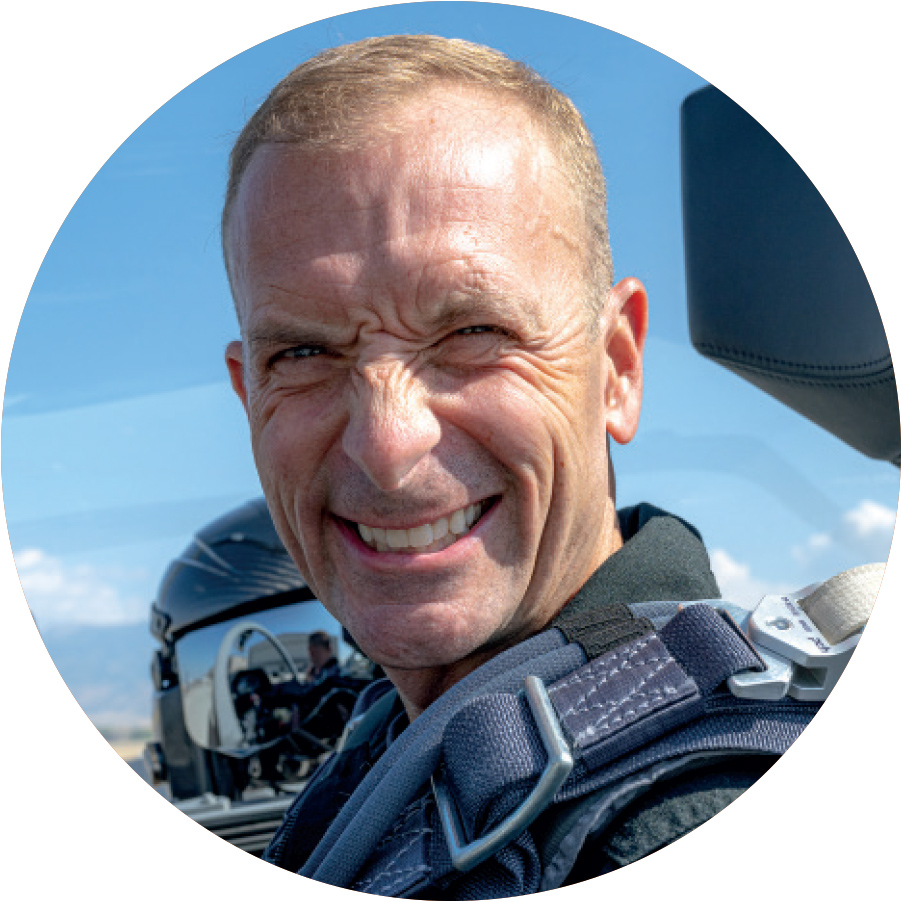To the Stars
But when Poteet looks up at the sky these days, he sees it with different eyes.
In a short time, he will rocket into space and head closer to the moon than anyone has been since NASA’s Apollo missions of the 1970s. He is serving as mission pilot for Polaris Dawn, guiding SpaceX’s Falcon 9 rocket on a five-day mission.

Poteet became interested in aviation as a freshman at UNH, when he went on a refueling flight in a KC-135 Tanker through UNH Air Force ROTC. “I got horribly air sick,” he recalls, “but when I saw the F-16 being refueled, I was hooked.” His ROTC recruiter was not optimistic when he mentioned his Air Force career choice. “I said, ‘fighter pilot’ and the guy laughed,” he says. “At that time, most fighter pilots were technical and engineering majors with GPAs of 3.8 or higher. That wasn’t me. But the recruiter’s remarks galvanized me, and by graduation, when I received my commission, I was accepted to flight school.”
After 20 years in the Air Force, Poteet worked for Draken International, which provides advance support for the U.S. Armed Forces. There he reconnected with company owner Jared Isaacman, an entrepreneur Poteet met during his Thunderbird days. A former air show pilot himself, Isaacman is a partner in SpaceX. He was named commander of Inspiration4, the first private human space flight, and got Poteet involved as mission director. When he asked Poteet to pilot Polaris Dawn, the answer was yes.
Unique Training
The Polaris Dawn will travel with a four-person crew, and unlike NASA crews, which may train for three to four years, the training for Polaris Dawn has been compressed into six or seven months, with three phases: systems and functional understanding, specialized training for research and finally an emphasis on team building and an understanding of group dynamics (this phase included a climb of Mount Cotopaxi in Ecuador).
“Pushing ourselves in various outdoor environments, learning to work as a team, trying different experiences — all of these things relate to my UNH education,” says the outdoor education major. “I gained key outdoor skills while there, and I learned how to motivate people, build camaraderie and learn through applied skillsets. UNH taught me to embrace challenges.”
Poteet, who lives in Monument, Colorado, with his wife and children, has already noticed a change in how they see space travel. “My 12-year-old son absolutely plans to go to space. He believes it will be commonplace in his lifetime, and I think he’s right. SpaceX is already working on a starship. In just one generation, we may truly explore that final frontier.”
Pushing Boundaries
- Reach the highest Earth orbit in the history of human space flight, reaching an initial apogee of 1,400 kilometers and breaking the Gemini 11 record.
- Skim along the edge of the inner Van Allen Belt, an area that provides the shortest route to the moon, but also an area of concern for NASA because of the possible significant radiation exposure to astronauts.
- Perform the first commercial spacewalk or EVA (extravehicular activity) and the first using SpaceX suits.
- Collect data on the challenges of long-term space flight and the effects of both radiation and micro-gravity on the human body.
- Test SpaceX’s new StarLink laser communications system, which could reduce the need for ground-based satellite connections and will be essential as future astronauts go farther from Earth.